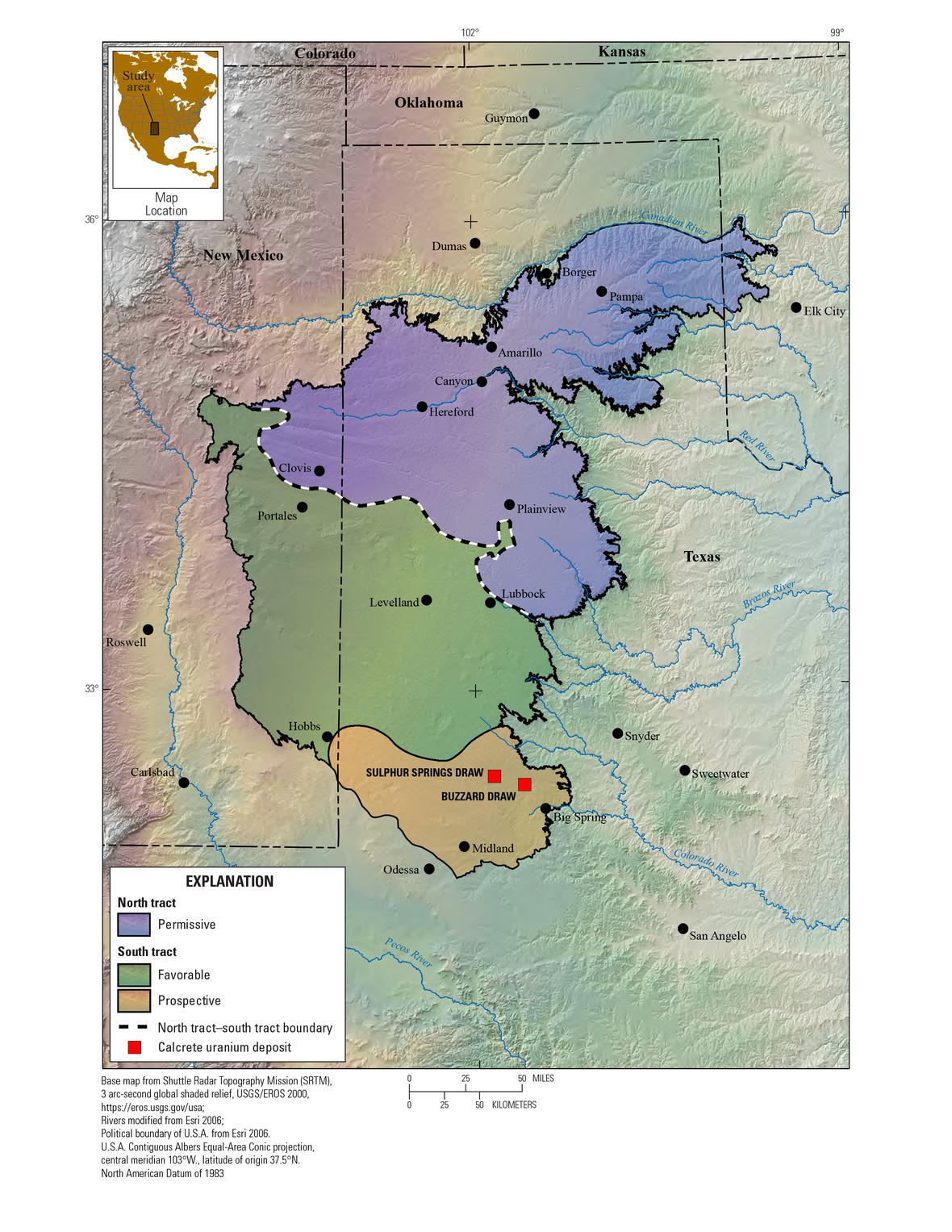Categories:
Energy
/
General Market Commentary
Topics:
General Energy
/
General Market Commentary
Texas uranium deposits could meet US nuclear energy demand for almost a year
The Southern High Plains region of Texas, New Mexico, and Oklahoma may hold more uranium than previously thought, a new study published Tuesday shows, but prices for the radioactive commodity would need to move much higher before any new mining takes place in the area.
According to the latest report by the US Geological Survey (USGS) there are about 40 million pounds of uranium oxide under the rolling South Texas plains present in a type of rock formation called “calcrete,” found in top uranium-producing countries including Australia and Namibia.
The USGS estimates there are about 40 million pounds of uranium oxide in the Southern High Plains region of Texas, New Mexico, and Oklahoma.
Such deposits, if developed, could supply a year’s worth of power to US nuclear reactors, which provide about 19% of the country’s electricity, the agency estimates.
While the US the world’s largest consumer of uranium used in nuclear power plants, only 11% of the commodity acquired by civilian nuclear power reactors last year was obtained from domestic sources, the USGS says.
The assessment of the Southern High Plains, which stretches from eastern New Mexico across North Texas to western Oklahoma, yielded a big surprise — a new uranium mineral species.
Discovered near Sulphur Springs Draw in Texas, the new mineral was named finchite, after long-time USGS uranium scientist Warren Finch (1924—2014). The element is a unique combination of strontium, uranium, vanadium, and water, and is a potential source of mineable uranium ore, the agency experts say.

Areas covered in USGS’s latest uranium assessment. (Image: USGS.)
“This assessment was especially exciting for us, as not only did we get to discover a new species of mineral, but we also had the opportunity to honour a friend and celebrated colleague,” USGS scientist Susan Hall, lead author of the study, said in a statement. “Dr. Finch’s long service and contributions to uranium science now live on through this new mineral, which itself has the potential to contribute to the Nation’s energy mix.”